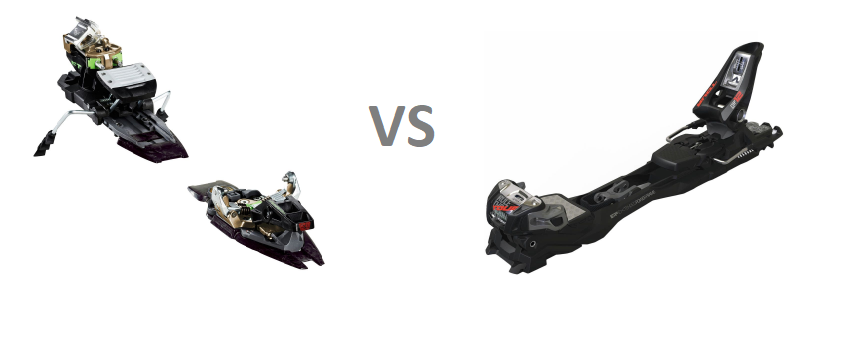
Tech Bindings vs Frame Bindings
When you’re ready to buy your first backcountry skiing setup, you might be wondering whether you should you get tech bindings or frame bindings. Each style has its pros and cons and is better suited for different skiers with different needs. We’ll go through each and help you decide which is right for you. When you’ve finished this, you should read our article that breaks down the best touring bindings on the market – it covers both tech and frame bindings.
The Binding Styles Explained
Frame Bindings
Frame bindings are visually quite similar to regular alpine bindings as the toe and heel pieces are very much the same as their alpine counterparts. The big difference is that there is a ‘frame’ that connects the toe and heel and the heel releases so you can ‘walk’ while clicked into the binding.

This familiarity can be appealing if you’re new to backcountry skiing. You step into frame bindings the exact same way as your alpine bindings, and they ski pretty much exactly the same. There are no pins to worry about lining up with your toes or leashes to fiddle with.
Many people use frame bindings for their first experience in the backcountry, and many use them for their entire skiing career. Although they are somewhat heavier than tech bindings, they are still very capable – even more capable than pin bindings in some scenarios. More on that below.
Tech Bindings
Tech bindings, or pin bindings, don’t look much like alpine bindings at all. The toe pieces have two pins at the end of spring-loaded arms, and the heel pieces have two little metal rods pointing at the heel of your boot. Tech bindings also require boots that have tech fittings. These are metal inserts that the bindings use to hold your boot into the ski.
Tech bindings are a heck of a lot lighter than frame bindings, but they generally don’t ski as well. They’re great in soft snow or powder, but in firmer conditions, tech bindings transfer a lot more vibrations to your boots. Their downhill performance has gotten much better in recent years with some models having elasticity and forward pressure, and they are much easier to climb with than frame bindings.
When climbing in a tech binding, your heel is completely disconnected from the ski. The heels of most pin bindings rotate out of the way, and your boot is attached only by 2 pins at the toe. This means you don’t have to lift the heel piece of the binding every step like you do in frame bindings. This saves a ton of energy over time.
Tech Hybrid Bindings
This isn’t reaaaally a definite category per se, but has been a trend lately. The Marker Kingpin broke the mold when it entered the market with tech toes and a full alpine heel. Smooth skinning on the way up and amazing performance on the way down was the goal, and they achieved it.
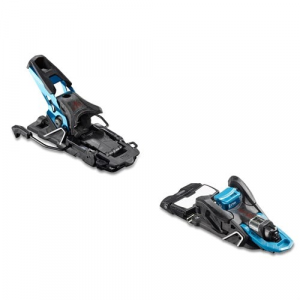
Hybrids are a bit of a compromise in all senses, but for many skiers they are perfect. While heavier than a tech binding, they’re still lighter than frame bindings and tour much better due to the tech toes and not lifting the full frame and heel every step. Black Diamond has also entered the fray with its Fritschi Tecton and Vipec, and the latest version of the Tecton has been getting rave reviews.
This year’s hottest new binding, the Salomon S/Lab Shift MNC binding follows this hybrid trend. It has tech toes for touring, but skis like a full-on alpine binding when descending. Read more about that binding here in our best touring binding comparison. It sounds like the ultimate binding for the skier that wants only one setup for resort skiing and touring.
Head-to-Head Comparison
Now it’s time for the head-to-head comparison of tech bindings vs. frame bindings by category. Each style has its strengths and weaknesses, so read on to find out which will better suit your needs.
Touring/Climbing
As I mentioned above, frame bindings keep your toe and heel clicked in while touring. You lift the binding heel piece (and the connecting frame) every step of the way, but in tech bindings, only the toe is connected. Tech bindings are much more efficient.
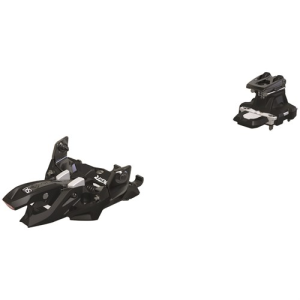
The pivot point of tech toes also feels much more natural. Frame bindings pivot at a point just in front of the end of your toes, while tech bindings’ pivot point is a bit farther back. It’s not quite at the ball of your foot, but between there and the end of your toes. The tech pivot point feels much more natural.
Winner: Tech
Weight
Not much of a contest in this category: tech bindings are way lighter. Even the heaviest tech bindings are significantly lighter than the lightest frame bindings. Hybrid bindings like the Marker Kingpin are still significantly lighter than the Marker Tour F12, which is one of the lighter frame bindings.
The other thing to consider is that with frame bindings you lift the heel piece of the binding every step. Tech bindings save a ton of energy in this regard. Check out the picture below to give you an idea of how that works.
Winner: Tech
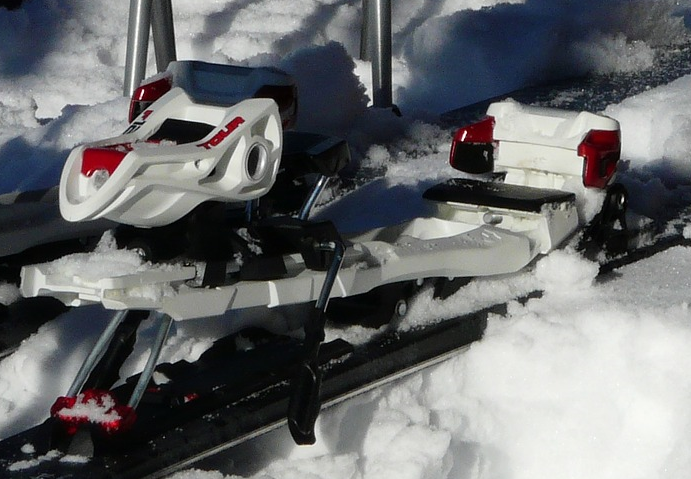
Downhill Performance
Frame binding look like downhill bindings and, perhaps unsurprisingly, they ski like them as well. Ripping down a chute in the backcountry in Marker Dukes doesn’t feel much different at all compared to doing the same thing in Marker Jesters at a resort. One downside to frame bindings is that some of them have a really high stack height (how high your boot is above the ski). Fritschis are particularly high, while Markers aren’t so bad. On Fritschis you’ll definitely notice that skiing feels a bit different. Not terrible, just different.
The downhill performance of tech bindings has never been their strongest asset, but in recent years they have come a long way. Tech Hybrid bindings like the Fritschi Tecton and Marker Kingpin are quite close to any frame binding in downhill performance. They don’t feel quite as solid and perhaps transmit a bit more harshness in firmer conditions, but the average skier might not even be able to tell the difference.
Even true tech bindings have improved immensely, with many models now offering forward pressure, a rotating toe, and some elasticity to dampen the harshness.
Winner: Frame
Ease of Use
One nickname for tech bindings is ‘dynafiddles’, because you have to fiddle around to get into the darn things. Stepping into tech toes is a bit of a learned skill, but many bindings now have helpful guides to make it easier. You step into fame bindings the exact same way as downhill bindings. Enough said.
For overall ease of use I would give the nod to frame bindings. For a new backcountry skier, they are much easier to figure out and will seem familiar.
Winner: Frame
Boot Compatibility
This one is kind of a no-brainer, as tech bindings require your boots to have tech toes. So any boots that don’t have tech toes won’t work in tech bindings. Duh.
Pretty much any boot will work in most any frame binding aside from snub-toed touring boots, which are pretty rare (and more likely to be used with tech bindings anyway).
Winner: Frame
Transitions
The switch to transition from climb to ski on Marker frame bindings are notorious for icing up, although newer models don’t seem to be as bad. Some frame bindings are also impossible to transition if you are clicked in, so you’re forced to remove your foot from the ski every time. Not an issue for some people, but should be noted.
Transitioning in tech bindings is, in most cases, simply a twist of the heel piece and a firm stomp to click in, although newer tech hybrid bindings are somewhat more complex.
Winner: Tech
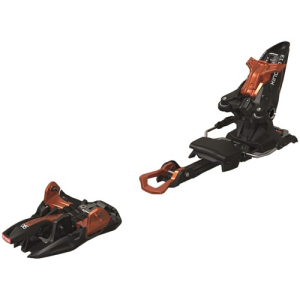
Durability
Old Dynafit bindings that were largely metal seem to last forever, but newer models like the original Radical definitely had their share of issues. The Radical 2.0 seems to have solved most of these problems, to be fair.
Frame bindings are ‘beefier’ than tech bindings, and because of this they’re heavier, but this also makes them quite durable. They generally last as long as any alpine binding.
Winner: Tie
Conclusion
It’s kind of tough to pick an overall ‘winner’, as both tech and frame bindings are very good at what they are intended to do. Frame bindings let you tour and ski as hard as you do at a resort on the way down without worrying about going past the limits of your bindings. Tech bindings tour exceedingly well, are very light, and ski pretty well. For longer trips, you can’t beat them.
I’ve used both styles, but now use tech bindings for all of my touring after using frame bindings for my first few years of backcountry skiing. I like the light weight, they ski surprisingly well, and I have definitely gotten used to stepping into tech toes.
Have a good think about where and how you ski most before committing to a touring setup. Then check out our article about the best touring bindings (both tech and frame) on the market to help you narrow it down further.
Let me know if I’ve missed anything or share your thoughts on tech bindings vs frame bindings below.